Methods for pruning black currant
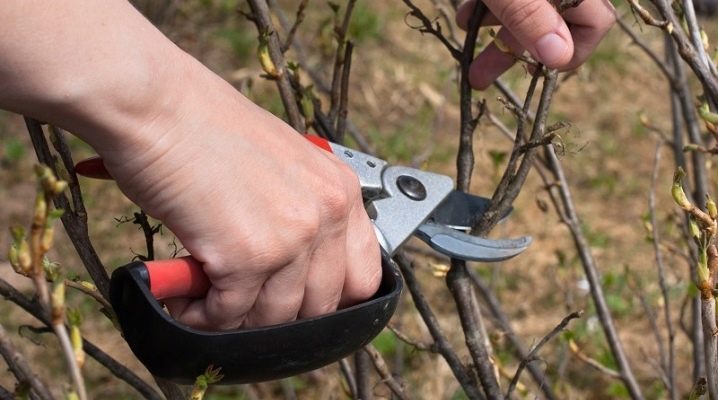
In almost every household plot, you can see a black currant bush. Sometimes inexperienced gardeners let the development of the bush take its course, not realizing that for the correct formation of the bush and getting a good harvest, currants need timely pruning.

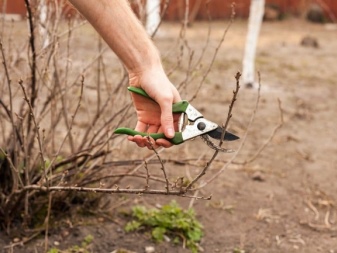
The need for a procedure
Many cultivated plants, which include black currant, need proper bush formation and timely pruning. Such actions are necessary in order for the appearance of the shrub to have a normal aesthetic appearance and be beneficial.
Blackcurrant pruning contributes to:
- increasing the amount of harvest;
- increasing the taste of berries;
- improving the presentation and size of the fruit;
- active growth of young shoots;
- getting rid of excess thickening of the bushes;
- free penetration of sunlight to the berries, this moment is very important during the ripening period of currants;
- prevention of many fungal diseases;
- an increase in the term of fruiting;
- simplification of procedures for the prevention of infectious diseases;
- easy disposal of insects and pests;
- quick recovery after winter cold;
- extending the life of the shrub.
There are several ways to cut currant bush:
- anti-aging;
- formative;
- sanitary.

When carrying out a haircut, it is necessary to adhere to certain rules that are suitable for all types of currants.
- The incisions should be smooth. This will help prevent infectious diseases.
- Slices needed treat with special antiseptic solutions, which are easy to prepare yourself.
- Pruning the escape is necessary to light wood.
- When removing shoots, the height of the stumps should not exceed 3-4 cmotherwise there will be a risk of fungal diseases.
The purpose of rejuvenating pruning is to free the shrub from dead and old growths. The procedure is carried out 5 years after the first vegetative period of the bush according to a certain scheme. Several strong and strong shoots are selected annually, which will replace drying and old branches. In the fall, all shoots are removed, except for those that have been selected for further growth.
If there are not enough young branches, then only very old ones are removed. If the old branches are completely removed, then the "ring" method is used, that is, the shoots are cut off at the very base. The cut site must be disinfected.

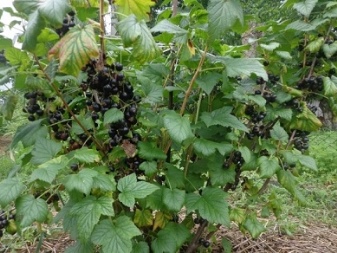
The main task of formative pruning is to form the crown of the plant. This helps the berries to be evenly distributed over the entire crop area. This method is a good growth stimulator for young, newly formed shoots, helps to get rid of excess branches. Excess shoots are mainly removed from the center of the bush.
The optimal shape for currants is a bowl. The purpose of sanitary pruning is to protect shrubs from infectious diseases and various pests. This method is carried out according to a single scheme for all cultivars. This procedure is recommended to be carried out regularly - to remove all damaged by insects and dried branches.
This is what is removed with this cropping method.
- Stems damaged by a kidney mite.
- Branches with leaves covered with foreign growths and dark spots. This signals that the bush has been attacked by aphids or fungal infections.
- Stems affected by spider mites. You can recognize them by the presence of a cobweb.
- Branches damaged by the glass. Such shoots are cut to the light part of the stem.
- Broken and deformed processes.
- Parts of the bush covered with moss and lichen.
- All spoiled and dried up shoots.
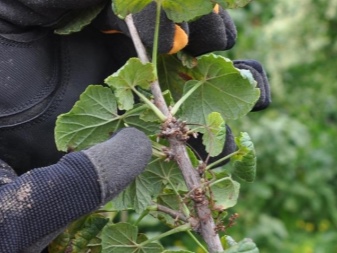
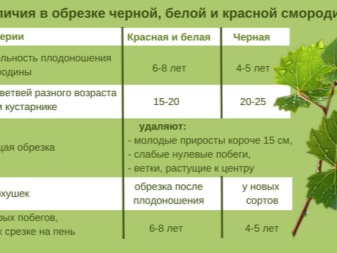
How to trim correctly?
Usually pruning is carried out in autumn and spring, this method allows the shrub to recover. The pruning pattern will be slightly different.
In the spring
The main purpose of a spring haircut is remove dried and damaged currant branches, that is, carry out sanitary pruning... This will help the plant prepare for the fruiting season.
Reasons for spring pruning.
- Remove frozen, deformed, diseased, withered and damaged branches.
- Stimulate the growth of young shoots.
- Strengthen the immunity of the shrub to diseases.
- Prevent thickening of the culture.
- Shoots that have reached the age of one year are removed.
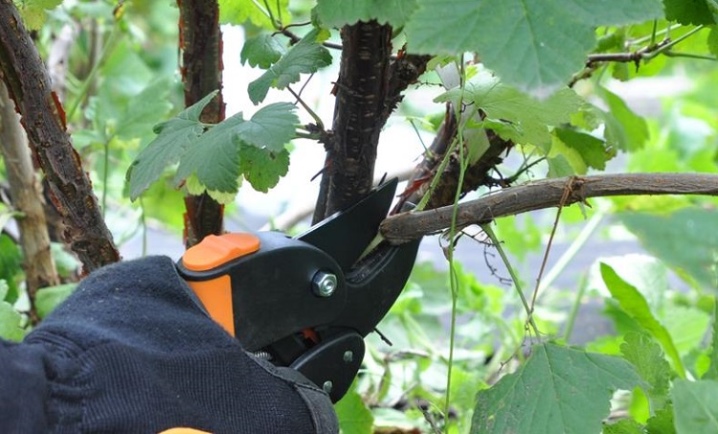
In autumn
Autumn haircut aims to get rid of the branches that thicken the shrub. For normal growth, young shoots need good lighting and air permeability. On five-year-old currant bushes, it is recommended to leave no more than 7 strong mature branches, their age should not be less than 4 years old. Trimming is carried out from the top layer of the soil. All stems older than 6 years are subject to mandatory removal. All young shoots of the current year are also subject to mandatory removal. It is recommended to leave them only in the case of a too old bush, when its fruiting deteriorates sharply.
The lateral layers of the past two seasons are also used for pruning, thereby improving the permeability of air and light to the center of the shrub. The tops of the branches are left to form buds, which will later grow into fruiting shoots. Shoot tips affected by insects and infectious diseases must be removed. To propagate black currants, young shoots are pressed to the ground and covered with a layer of soil 10-15 cm. Seedlings need regular watering, and in spring they will give young shoots. Then they are separated and transplanted for further growth.
The formation of currant bushes begins immediately after planting. This year the culture needs a very deep pruning. Under the post-planting clipping, it is assumed that all branches are pruned. No more than three buds are left from the ground. Weak shoots are cut more strongly than stronger branches. Pruning the second year means keeping no more than 7 strong, strong branches, everything else is removed. In the third growing season, it is recommended to leave only zero shoots. Their number should not exceed 5 branches. They are pruned into two buds to encourage the bush to branch. Unripe and very long shoots are shortened, all others are completely subject to cutting. Observing these recommendations, by the end of the third growing season, the bush is considered fully formed.
Pruning mature shrubs involves a sanitary, rejuvenating, and supportive pruning.
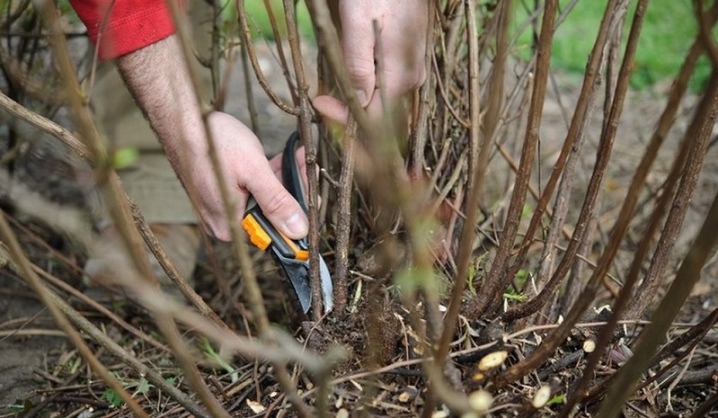
During sanitary cutting, currant bushes are freed from unripe, broken off, dry, affected by pests and diseases, intertwining and deformed branches. Lying or inclined to the ground shoots are also advised to be removed. The bush bears much worse fruit on branches with such criteria. On them, the berries are noticeably smaller and are more often affected by various diseases. It is necessary to adhere to a very important rule: the stems are shortened so that the stumps are not visible. Otherwise, they will become an excellent refuge and breeding ground for insects and pests. The presence of either brown or black dots on the branches of a through passage indicates that the bush has suffered from winter frosts or is struck by glass. It is better to cut such branches completely.
Next comes anti-aging pruning. First of all, five-year and three-year branches are removed to give impetus to the development of lateral shoots. This is done only if the formed bush has at least 7 branches.All annual shoots are cut by 1/3. The last is thinning or supporting pruning. This implies the procedure for the removal of excess shoots, which thicken the crown and do not allow the berries to sing at the right time. An adult bush is recommended to have no more than 18 shoots, moreover, they must be formed in the last three years.
Old neglected blackcurrant specimens also need pruning. If the age of the bush has reached 15 years, then leaving it is pointless, you will not get a good harvest from it. It is better to uproot such shrubs and replace them with new ones. Younger plants are subject to rejuvenation and require thinning pruning. The neglected and old bushes rejuvenate gradually, in terms of two to four years. No more than half of the branches should be removed each year.
In very rare cases, currant bushes are cut completely to the ground. After such a procedure, the plant needs careful care and constant feeding.

Unusual schemes
Breeders have developed several unusual ways to prune blackcurrant bush. Pruning for beginner gardeners suggests at the end of the season the removal of all shoots that have not grown more than 15 centimeters during the growing season. Lazy trim always involves growing young currants. For this, the bush is conventionally divided into two parts. One of them is removed completely, the second is left unchanged.
The next year, shoots are removed from the untouched part. Such bushes give a good harvest and high-quality berries, but require more careful agricultural maintenance. The standard method of growing currants is a success. Currants formed in this way are easier to care for and pick berries. The big disadvantage of this formation is the rapid wilting of the currant.
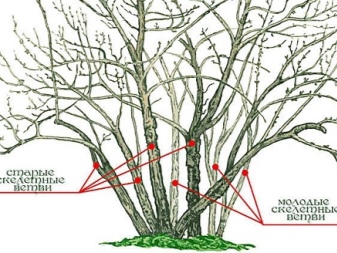
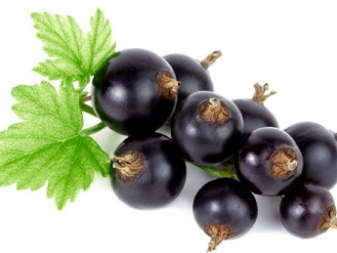
Follow-up care
After the pruning procedure, black currants need additional feeding. It is considered optimal in the spring to apply complex fertilizers that contain phosphorus and potassium. Fertilizers that contain nitrogen in their composition are also useful in spring. In the fall, you can add urea or potassium chloride.
Animal waste humus will be beneficial in both spring and fall. It is for this reason that it should not be neglected in any season.
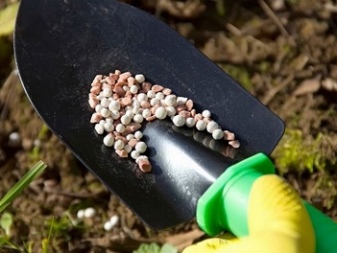














The comment was sent successfully.